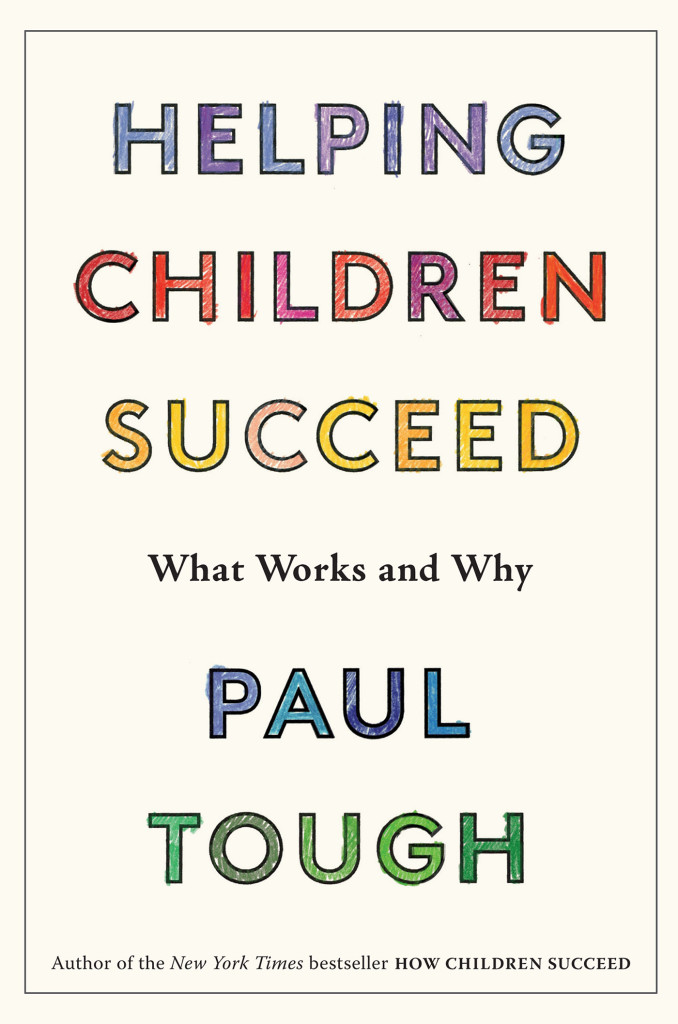Helping Children Succeed
Paul Tough’s latest book is a must read for anyone interested in helping children growing up in poverty and other circumstances of adversity
By Pamela Cantor, M.D., President and CEO
I learned about the science of stress and the developing brain in the late 1980s when I was a medical student. For more than 25 years, this information has been well understood by physicians who repeatedly see the effects of chronic stress in their patients. Well understood by physicians and academics, but by few others, including most educators.
What Paul Tough has done, initially with his first book, How Children Succeed, and now even more so with his new book, Helping Children Succeed: What Works and Why, is play a profound role in making information that has been locked in academia available to all of us, but most importantly to the public systems responsible for the health and education of our children. He has a unique ability to translate science into language all of us can not only understand but can use in our daily practice.
Paul is, in my view, a crusader for the well-being of America’s children. With this book, I believe he has thrown down the gauntlet to our public education system. Take, for example, the very first paragraph, where he cites a statistic that hit many of us at Turnaround for Children like a lightning bolt when it was first released in 2013: 51 percent of our country’s public schoolchildren are growing up in low-income households. Then he writes, “Passing the 50 percent mark may be a symbolic distinction, but as symbols go, it is an important one. It means that the challenge of teaching low-income children can no longer be considered a side issue in American Education. Helping poor kids succeed is now, by definition, the central mission of American public schools and, by extension, a central responsibility of the American public.”
At Turnaround for Children, we have known since our founding in 2002 that something profound has been missed in the effort to understand and address persistent underperformance in our public schools. Our work has been to see the pattern in the challenges these schools experience and to design an intervention focused on them. Underlying this complex problem, we believe, is what growing up with unrelenting stress can do to the developing brains of children.
As Paul notes, “High levels of stress, especially in early childhood, hinder the development of a child’s prefrontal cortex, the part of the brain that controls our subtlest and most complex intellectual functions, as well as our ability to regulate ourselves both emotionally and cognitively.” But Paul not only lifts out the fact that we now understand how adversity impacts the developing brain, he points out that there is something that can be done about it. Helping Children Succeed, as he puts it, is “an attempt to answer the question: Now that we know this, what do we do?”
For starters, environments and relationships matter. They matter a great deal. And not just the physical environment but “the behaviors and attitudes of the adults…children encounter every day.” This knowledge is something we are sharing with our partner schools every day. Last spring while researching his book, Paul visited M.S. 45 – Thomas C. Giordano Middle School, one of our partner schools in the Bronx, and listened to students, teachers, staff and Turnaround’s team. In Helping Children Succeed, he describes our efforts to build a safe, supportive environment there where children can “engage more deeply in their own learning.”
I feel very fortunate that Paul chose to highlight our work and other excellent programs, such as EL Education, that simultaneously focus on student development and academic achievement, or as Paul puts it, “the relationship toolbox” and “the pedagogical toolbox.” And I am grateful that he devotes much of this book to the process of skill building – how it works in calm, consistent, responsive settings, and how it can go awry when children experience significant amounts of adversity. This has been something we at Turnaround have spent a great deal of time both researching in the scientific literature and observing in our partner schools. In Helping Children Succeed, Paul describes our Building Blocks for Learning paper as giving educators, “a different and valuable lens through which to consider the problems of disadvantaged kids in the classroom. We want students in middle school and high school to be able to persevere, to be resilient, to be tenacious when faced with obstacles- but we don’t often stop to consider the deep roots of those skills, the steps that every child must take, developmentally to get there.”
At Turnaround, we continue to spend a great deal of energy considering the steps we must take to accelerate healthy development and academic achievement for all children growing up with adversity. And we know there is something that can be done about it. What we mean by that at its most basic level is that children have to go to schools in environments that are physically and emotionally safe and that offer them rich opportunities for trusting relationships. In these safe and supportive environments, children can develop the skills common among all successful people. Helping Children Succeed affirms that we are on to something, that it is hard work, but it will make all the difference for many more children.

Share This Story